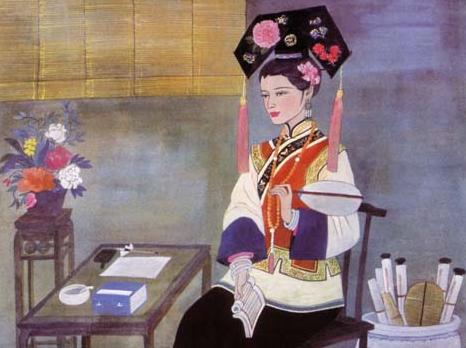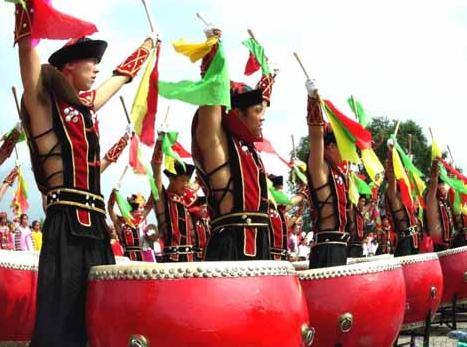
Population and Distribution:
based on the fifth national census of 2000. The Man people live mainly in Heilongjiang, Jilin and Liaoning Provinces of north China although the Man minority can be found in most of China's largest cities as well.
Language:
In the 16th century, the written language of the Man people was created from characters based on the Mongolian language, with dots following the distinctive characters. The Man language is part of the Tungus-Manchu group, a branch of Altaic phylum. As the Man people migrated from northern to central China, they learned and adopted the Chinese language of the dominant Han. Today, only elders in remote regions of Heilongjiang Province still know and can use their ancestral language.
Belief:
The ancient Man people believed in Shamanism. Later, with the influence of Buddhism, Daoism and Confucianism, their beliefs took on a pluralistic quality. It is not uncommon to see statues of Bodhisattva, Guan Yu and other gods positioned in Man houses for blessing.
Food:
In addition to their literary and artistic accomplishments, the Man people developed agriculture, fishery and animal husbandry for their livelihood, especially after the founding of Modern China in 1949.
The Man people have a distinctive cuisine with typical dishes that include Chaffy dish, acid soup, blood sausage, and 'bobo', a type of steamed cake. In Man culture, eating the meat of dog or any product derived from dog is shunned.

Traditional festivals of the Man are similar to those of the Han people. During the Spring Festival, Lantern Festival, and Dragon Boat Festival and on Mid-Autumn Festival, distinctive sports like skating are included in the festivities of the Man people.
Other Traditions:
The Man people are brave and athletic. They excel at riding and shooting, which women and children can do as well as men. In the Qing Dynasty, men plaited their hair on the left side and shaved off the hair around their foreheads. Women wore hair pins, earrings and a once piece dress, the Qipao.





